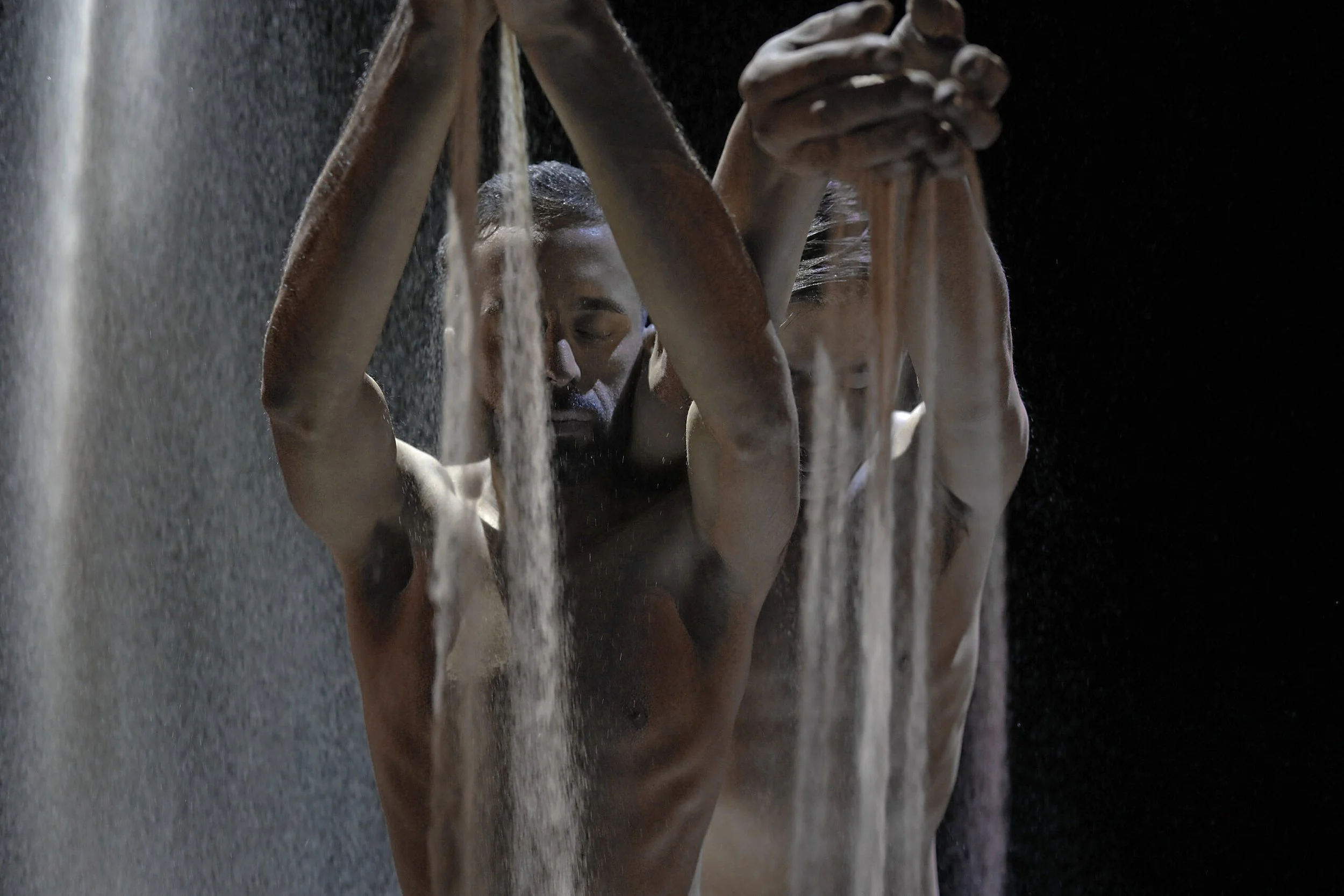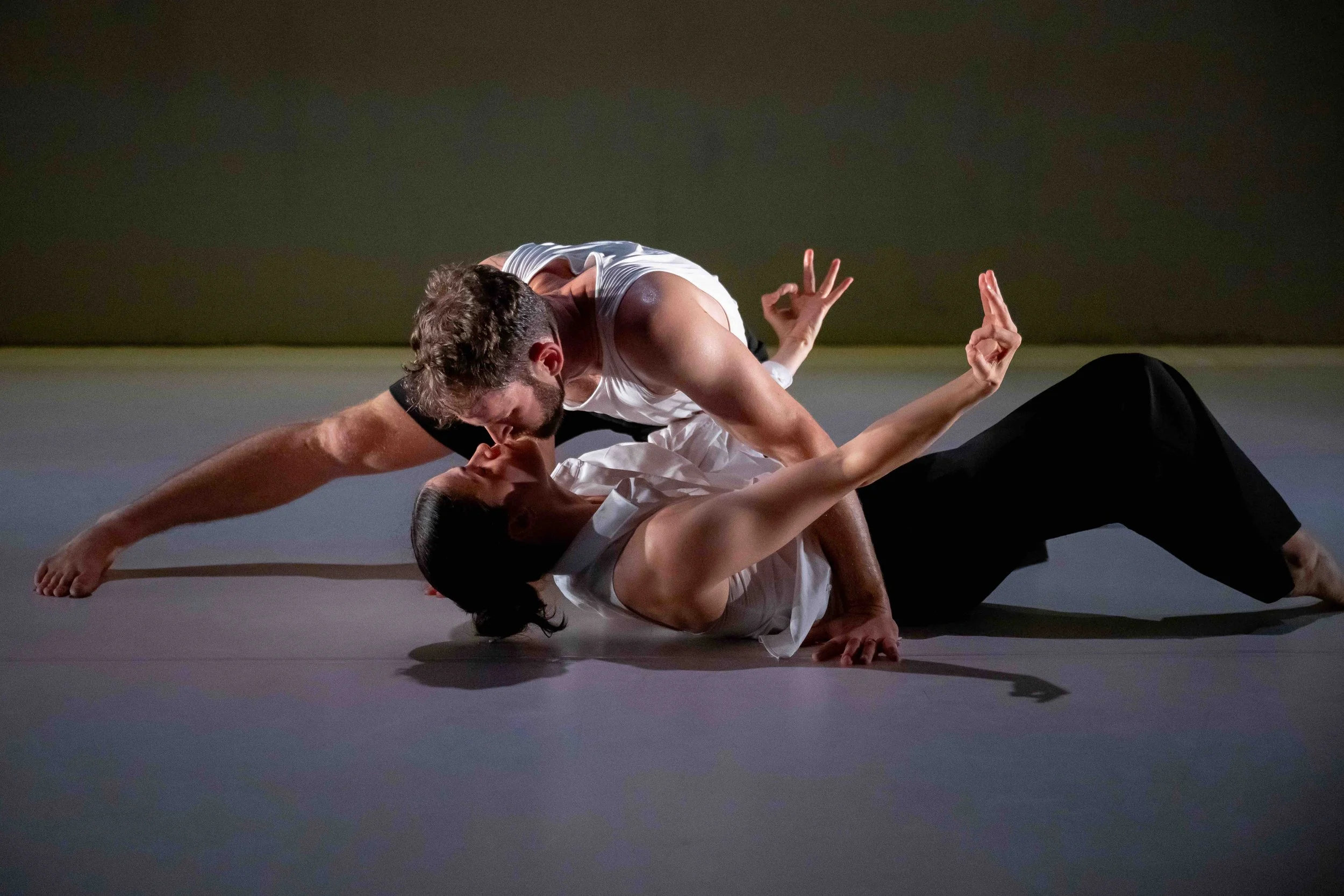Dance review: Samsara exudes serenity at VIDF
Aakash Odedra Company’s duet proves mesmerizing, exhilarating
Samsara. Photo by Nirvair Singh Rai
Vancouver International Dance Festival presents Samsara at the Vancouver Playhouse until March 25
THE THUNDERING REVERBERATION of a gong strike breaks the silence in the Vancouver Playhouse on opening night of the North American premiere of Aakash Odedra Company’s Samsara. It’s a start that is suspensefully cinematic; the audience is invested right away, and, from the instant they appear until the very end of the piece, so too are dancers Aakash Odedra and Hu Shenyuan.
A meld between ballet, contemporary, Chinese folk dance, and the classic Indian dance form kathak, Samsara takes inspiration from the 16th-century Chinese novel Journey to the West. It touches upon Buddhist philosophy to explore the notion of “samsara”—life, existence, death, and rebirth.
While it’s a unique concept to wrap the mind around, the UK/India-based pair’s duet translates to the stage in exhilarating, emotional ways.
Odedra and Shenyuan are forces to be reckoned with, both as a duo and as individuals. Odedra’s presence is remarkably multifaceted: commanding and raw yet gently expressive. Shenyuan’s complementary demeanour is truly serene, and his technique—flawless in every sense—is coupled with a calm, reassured confidence.
Samsara’s set design, a landscape created by Tina Tzoka, adds depth to the dancers’ movement rather than detracting focus from it. Various stone bust statues are positioned around the stage, with streams of sand cascading down from the rafters onto their heads. The effect creates a sound similar to a rainshower; it brings a renewed, peaceful atmosphere over the theatre, creating small piles of sand which Odedra and Shenyuan interact with throughout the work.
At times they scoop up handfuls of sand and walk slowly and deliberately across the stage stepping heel first, passing piles back and forth between each other’s cupped hands to create a kind of human hourglass. In other moments they interact more wildly with it, flinging granules into the air with grand sweeping gestures of the arms, which graze the stage floor.
At one point, Odedra stands under a sand shower: he spins around, arms in an open and twisting second position that raise beautifully to the sky, while the sand falling atop his head whips around him, mesmerizingly.
Throughout the piece, there is a stunning sense of balance in movement quality. Some aspects are more technically oriented—take, for example, a gratifyingly slow, controlled leg extension from Shenyuan centre-stage while outfitted in nothing more than a nude dance belt. But those moments are evened out by intricate, rippling, kathak-inspired hand movements executed with incredible exactitude. Then comes a rhythmic stomping section, and then a karate-style segment where each hit that the dancers make toward each other is met by a perfectly timed live drum beat.
Musicians Nicki Wells, Beibei Wang, and Michael Ormiston perform a stand-out score throughout the entirety of the show, one that meets every change in choreographic tone. Wells’s entrancing voice is courageous and unwavering; Wang on drums is a whirlwind, putting her entire body into an explosive display of musical prowess.
The movement in Samsara is intrinsic. Odedra and Shenyuan are controlled powerhouses, their strength not fading one ounce and their lines ever-crisp as the hour-long duo draws to a close. A moment of partnering displays this resilience perfectly: Odedra hangs upside down from Shenyuan’s neck by his feet, entering into an unsupported headstand, where he remains for nearly a minute before crossing his legs and lowering slowly to the ground with painstaking control. The amount of palpable trust between the two is remarkable and resonates among the audience.
Watching this pair, we get the impression that they are leaving it all on the stage. Samsara is not merely a performance, and the dancers are doing more than just putting on a show; the piece is an expression of life, hesitation, discovery, and development that comes from a place of vivid inner honesty.
Audiences are fortunate to be able to tap into such rare and intimate vulnerability coming from the stage. Samsara is sure to capture—and keep—viewers’ attention long after the curtains close.













